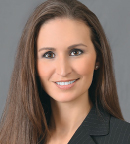Half of the young women presenting to an academic surgical breast practice would qualify for mammography screening starting at age 40. According to the newly updated guidelines, these young at-risk women may be missed, researchers reported at the 2016 American Society of Breast Surgeons (ASBS) Annual Meeting.1

Kevin Hughes, MD
Lead investigator Kevin Hughes, MD, said the message to young women is clear. “If your doctor adheres to the new recommendations for breast screening, actively seek out a formal risk assessment, whether or not it is specifically suggested, to make sure you receive the care you need.”

Jennifer Plichta, MD
Critical to the development and interpretation of all these guidelines is a formal risk assessment. Risk assessment is needed not only to determine who qualifies for mammography but who may require screening MRIs and/or genetic testing.— Jennifer Plichta, MD
Tweet this quote
At the 2016 ASBS meeting, the results of this study were presented by Jennifer Plichta, MD, a fellow in breast surgery at Massachusetts General Hospital, Boston. Dr. Hughes is Co-Director of the Avon Comprehensive Breast Evaluation Center at Massachusetts General Hospital and Medical Director of the Bermuda Cancer Genetics and Risk Assessment Clinic in Hamilton, Bermuda.
Guidelines Recommend Delaying Screening
Newly updated guidelines now recommend that for average-risk women, mammographic screening be delayed until age 45. According to the 2015 American Cancer Society (ACS) guidelines, earlier initiation—at age 40—is warranted for women at above-average risk, which includes those with a personal history of breast cancer, confirmed or suspected genetic mutation, or a history of thoracic radiotherapy at a young age. The ACS also recommends yearly magnetic resonance imaging (MRI) plus mammography for those with a calculated lifetime risk of ≥ 20%.
The 2015 ASBS guidelines are similar, with an additional recommendation that annual mammography be considered for women with a lifetime risk ≥ 15% and those considered at risk for a breast cancer–related genetic mutation.
“Critical to the development and interpretation of all these guidelines is a formal risk assessment,” Dr. Plichta said. “Furthermore, risk assessment is needed not only to determine who qualifies for mammography but who may require screening MRIs and/or genetic testing.”
Dr. Hughes added that many young women are unaware that their personal risk could warrant screening starting at age 40. “The new guidelines are a bit of a Catch 22,” he said.
Dr. Hughes and his colleagues applied the latest recommendations to the patients in their breast specialty clinic, specifically to determine how many women between the ages of 40 and 44 would be eligible for screening mammography, MRI, and genetic testing under the new guidelines.
Study Details
The researchers reviewed a database of patient-reported risk factors and family history of all new female patients at the researchers’ breast surgery clinic from March 2011 through October 2015. Patients with a personal history of breast cancer were excluded. Those with a ≥ 5% risk of a BRCA mutation by the Tyrer-Cuzick, Myriad, or BRCAPRO model who met the criteria of the National Comprehensive Cancer Network were considered at risk for a genetic mutation, whereas women with a ≥ 20% lifetime risk of breast cancer by one of these models were considered eligible for MRI.
They found 6,964 women aged 40 and older who did not have a breast cancer diagnosis and who were seen as new patients in their breast clinic during this period. Of them, 909 (13%) were aged 40 to 44, and these women made up the study population.
50% of Women Identified at Risk
Among this population of 909 women between the ages of 40 and 44, by formal risk assessment, 46% had a ≥ 15% lifetime risk for breast cancer, and 25% were found eligible for genetic testing. “Since many fell within both groups, we determined that about 50% of these women would be eligible for screening mammography beginning at age 40, under the new guidelines,” Dr. Plichta reported.
Impact of Updated Breast Cancer Screening Guidelines
- Updated breast cancer screening guidelines suggest delaying mammography to age 45 for women at average risk for breast cancer.
- Breast surgeons at Massachusetts General Hospital attempted to determine whether this delay in screening would impact younger women not familiar with their personal risk.
- They identified 909 women aged 40 to 44 in their practice, and by formal risk assessment criteria, approximately 50% would be eligible for screening starting at age 40 by having a ≥ 15% lifetime risk of breast cancer or breast cancer–related genetic mutation.
- The researchers concluded that women between the ages of 40 and 44 should have a formal risk assessment to ensure they are screened appropriately.
In the older cohort, on the other hand, only 31% of women aged 45 and older were considered at above-average risk, and only 17% were eligible for genetic testing. Similarly, MRI eligibility was greater among the younger cohort (32%) than the older cohort (21%).
Clinical Implications
It is essential that women between the ages of 40 and 44 have formal risk assessment to identify whether they would qualify for screening mammography, screening MRIs, and/or genetic testing, the researchers concluded.
“We believe some of these differences may be related to the incorporation of age into the risk models and some to selection bias in our cohort,” she acknowledged. “But I still think a significant number of women would meet these criteria without having a ton of high-risk features.”
Who will perform this risk assessment in actual practice? “I wish this had been thought out prior to establishing these guidelines,” Dr. Plichta admitted. “I would say that in an ideal world, this could be done by a woman’s primary care physician or gynecologist, but this is unrealistic.” ■
Disclosure: Drs. Plichta and Hughes reported no potential conflicts of interest.
Reference


